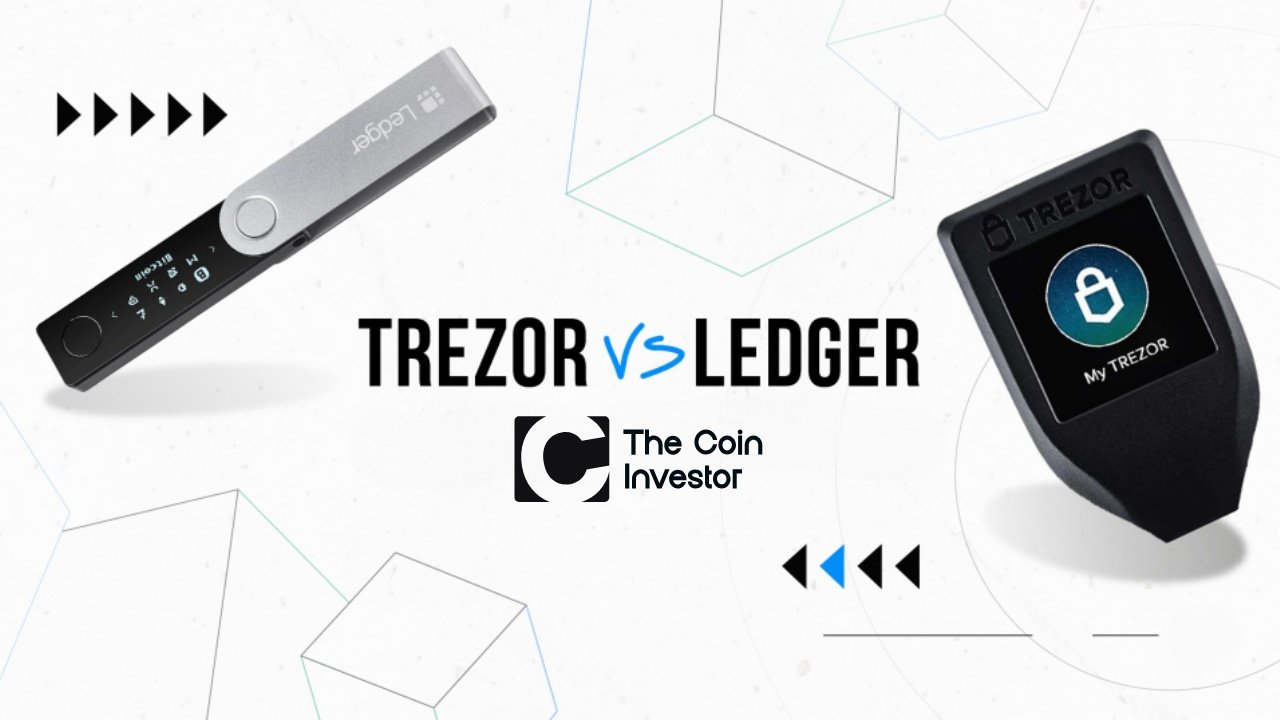In the digital asset revolution, securing your investments is paramount.
A hardware wallet provides strong protection for your crypto assets by keeping your private keys offline, a method known as cold storage. This isolates your funds from online threats. Two of the most prominent names in this space are Trezor and Ledger.
Choosing between Trezor vs Ledger depends on your priorities, from security philosophy to user experience.
This guide offers a detailed comparison to help you determine which of these best crypto wallets aligns with your investment strategy, giving you complete control over your digital assets.
Trezor vs Ledger

When selecting a crypto wallet, investors are often faced with the Trezor vs Ledger decision.
Both brands are leaders in the hardware wallet market, but they have key differences in their approach to security, product design, and functionality. This comparison will break down these distinctions to help you make an informed choice.
Company Backgrounds and History
Trezor was launched in 2014 by SatoshiLabs, a pioneer in the cryptocurrency space.
The company is credited with creating the first commercially available hardware wallet, the Trezor One. Its foundation is built on the principle of open source security, fostering transparency and community trust from the beginning.
Ledger, also founded in 2014, emerged from the merger of three French startups.
The company quickly became a major force by focusing on a different security model. Ledger devices integrate a secure element chip, similar to those used in passports and credit cards, to protect private keys.
Market Presence in the United States
Both Trezor and Ledger have a significant market presence in the United States, with their products widely available through official websites and authorized resellers. They are considered the top two choices for investors seeking cold wallets.
Ledger has often been noted for its strong marketing and broad appeal, while Trezor maintains a loyal following, particularly among long-time cryptocurrency advocates and those who prioritize its open-source nature.
Trezor vs Ledger Models
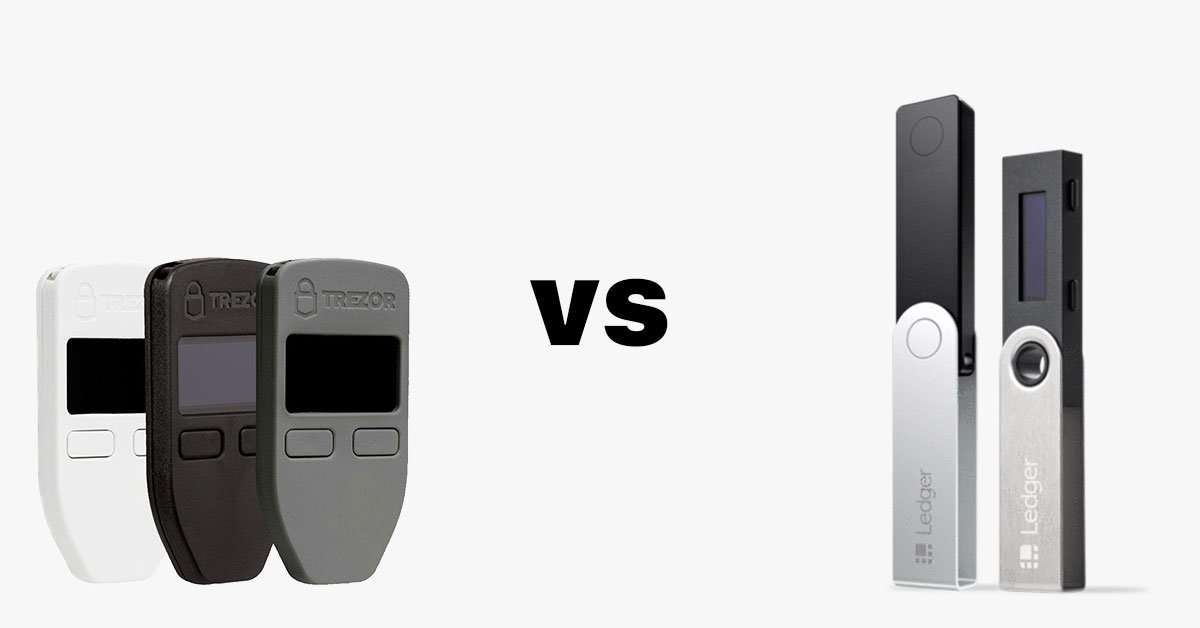
The two brands offer a range of devices at different price points, each with different features designed for various user needs, from beginners to advanced users.
Key Features of Trezor Safe 5 and Safe 3
The latest Trezor wallets show a significant evolution. The Trezor Safe 3 was the first Trezor model to incorporate a secure element, adding a layer of protection against physical attacks. The new flagship, the Trezor Safe 5, builds on this with more advanced features.
It boasts a large color touchscreen with haptic feedback for a more intuitive user experience and features an enhanced backup standard. It also includes the secure element chip while maintaining the brand’s commitment to transparency.
Both models integrate seamlessly with the Trezor Suite application for managing crypto assets.
Key Features of Ledger Nano X, Stax, and Flex
Ledger’s lineup is known for its sleek design and range of features.
The Ledger Nano S Plus is an evolution of the classic Ledger Nano S, offering more memory for apps. The Ledger Nano X is a popular choice due to its Bluetooth connectivity, allowing it to be used with a mobile device via the Ledger Live app.
For those seeking a premium experience, the Ledger Stax features a large, curved E Ink touchscreen and wireless charging. The Ledger Flex bridges the gap, offering a modern touchscreen and premium features at a more accessible price point than the Stax. All Ledger devices are built around the company’s proprietary Blockchain Open Ledger Operating System (BOLOS).
Trezor vs Ledger: Security Architectures Explained

The main difference between the two brands has historically been their approach to security architecture. This is a critical factor when choosing the best hardware wallet for your needs.
Trezor’s Open-Source Approach
Trezor has built its reputation on a fully open-source security model. Both the hardware and software are open for public scrutiny, which allows security researchers to audit the code and identify potential vulnerabilities.
This transparency is a core part of the Trezor hardware wallets‘ appeal. While earlier models like the Trezor Model T relied solely on this approach, the newer models now include a secure element as well, combining transparency with enhanced physical protection.
Trezor vs Ledger: Ledger’s Secure Element Technology
Ledger’s security is centered on its secure element chip.
This is a physically isolated chip designed to withstand sophisticated physical attacks.
It runs Ledger’s custom Open Ledger Operating System (BOLOS).
The secure element ensures that private keys are never exposed to your computer or the internet, providing robust security features.
While the hardware’s architecture is proven, the software is not fully open source, a point of contention for some community members.
Side-by-Side Security Feature Analysis
Both brands offer strong security features.
- PIN Protection: Both require a PIN to unlock the device.
- Passphrase: Both support an optional 25th word (passphrase) that creates a hidden wallet for plausible deniability and added security.
- Physical Security: Ledger has historically had an edge against physical access threats due to its secure element chip. However, with the Trezor Safe 3 and Safe 5 now including a secure element, this gap has narrowed significantly.
- Backup: Both use a standard seed phrase (recovery seed) for backup. The Trezor Model T and Safe 5 also offer an advanced Shamir Backup system, which splits the recovery phrases into multiple shares.
Trezor vs Ledger: Supported Cryptocurrencies and Tokens

The ability to manage a diverse portfolio of digital assets is a key consideration for many investors.
Number and Range of Supported Coins
Ledger generally supports a wider range of cryptocurrencies and tokens directly within its Ledger Live application, boasting support for over 5,500 assets. Trezor also supports thousands of coins and tokens through its Trezor Suite and third-party integrations, including popular options like the Trezor Model T, but Ledger’s native support is typically more extensive.
NFT and Token Management Capabilities
NFT management is becoming increasingly important. The Ledger Live app provides a more integrated experience for viewing and managing NFTs. While Trezor wallets also support NFTs, the process often relies on connecting the device to third-party marketplaces or wallets, making the user experience slightly less seamless compared to the Ledger Live application.
Trezor vs Ledger: Wallet Features and Functionality
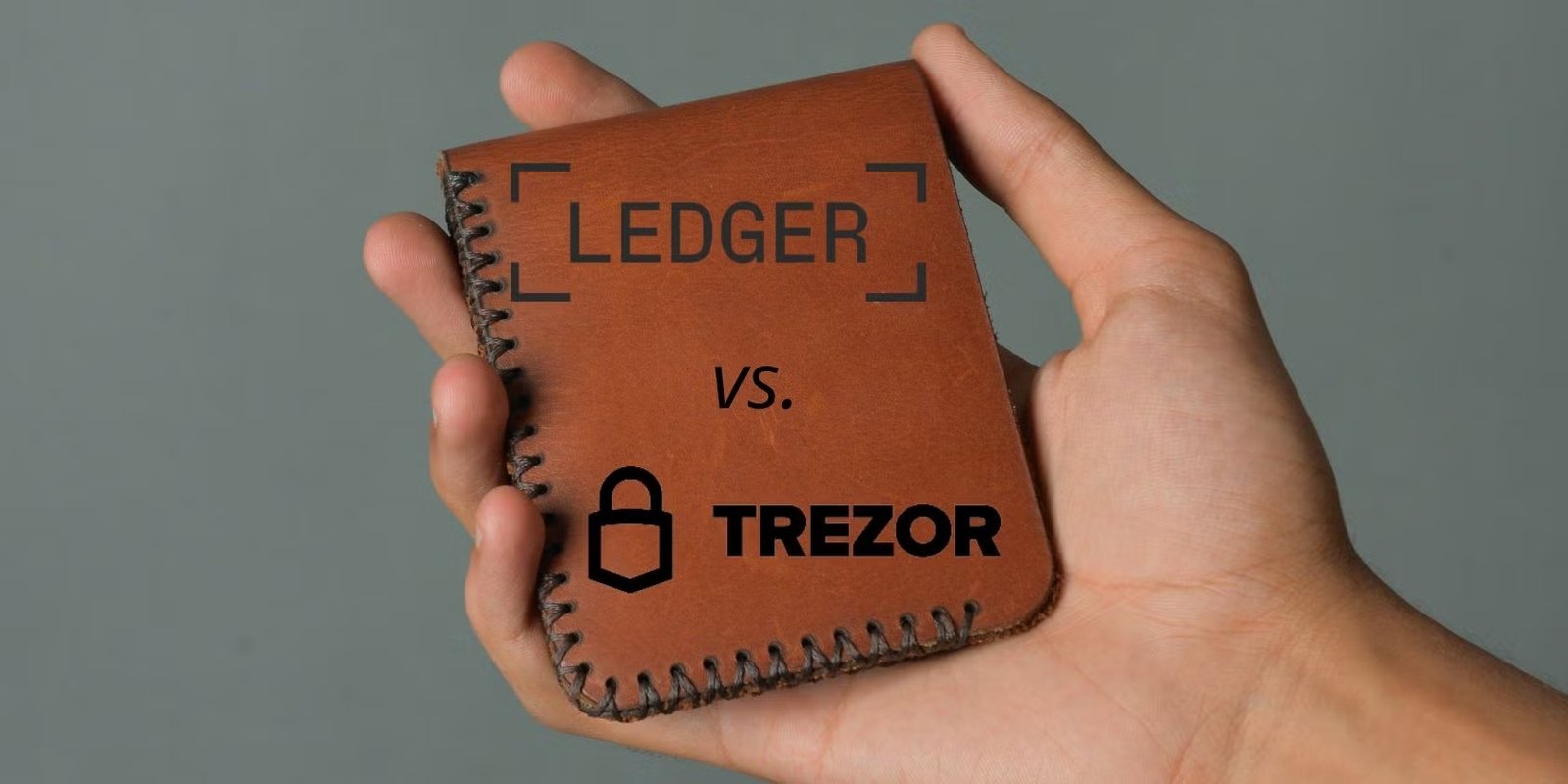
The day-to-day usability of a hardware wallet is defined by its on-device interface and its backup mechanisms.
On-Device Controls and Display Screens
The user experience varies across models. The Ledger Nano S Plus uses two physical buttons for navigation.
The Ledger Nano X has a similar button-based system. In contrast, the Trezor Model T and the newer Trezor Safe 5 feature a color touchscreen, providing a more intuitive interface for verifying transactions.
The Ledger Stax and Ledger Flex also offer large touchscreens, which greatly improve ease of use.
Backup, Recovery, and Passphrase Options
Both wallets rely on a recovery phrase (typically 12, 18, or 24 words) to restore access if the device is lost or damaged. This seed phrase gives you complete control over recovering your crypto assets.
Trezor offers an advanced recovery method called Shamir Backup on its premium models, which adds another layer of security by splitting the recovery phrases. This is one of the additional features that appeal to advanced users.
Trezor vs Ledger: Connectivity and Integration
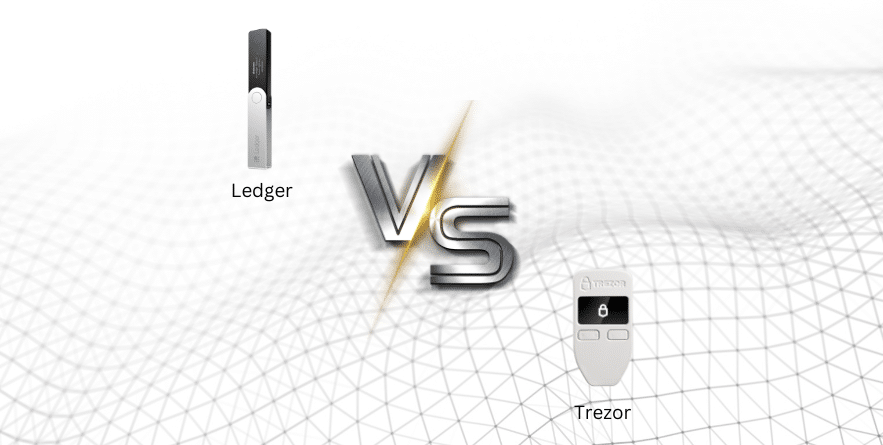
A hardware wallet’s utility is enhanced by its ability to connect with desktop and mobile software.
Desktop and Mobile App Compatibility
Ledger offers the Ledger Live software, a comprehensive platform for desktop and mobile that allows users to manage their portfolio, stake assets, and access dApps.
The Ledger Nano X, Stax, and Flex offer Bluetooth connectivity, making them easy to use with the dedicated mobile app.
Trezor provides the Trezor Suite, a desktop and web application that offers a clean interface for managing assets.
Trezor’s mobile app has traditionally been view-only for iOS, with full functionality requiring a cable connection.
Third-Party Wallet Integrations
Both Trezor and Ledger devices are compatible with a wide range of third-party software wallets like MetaMask, Yoroi, and others.
This allows users to securely manage assets that may not be directly supported in Trezor Suite or Ledger Live, and to interact with the broader DeFi and Web3 ecosystems while keeping their private keys offline.
Trezor vs Ledger: Ease of Use for Beginners and Experts
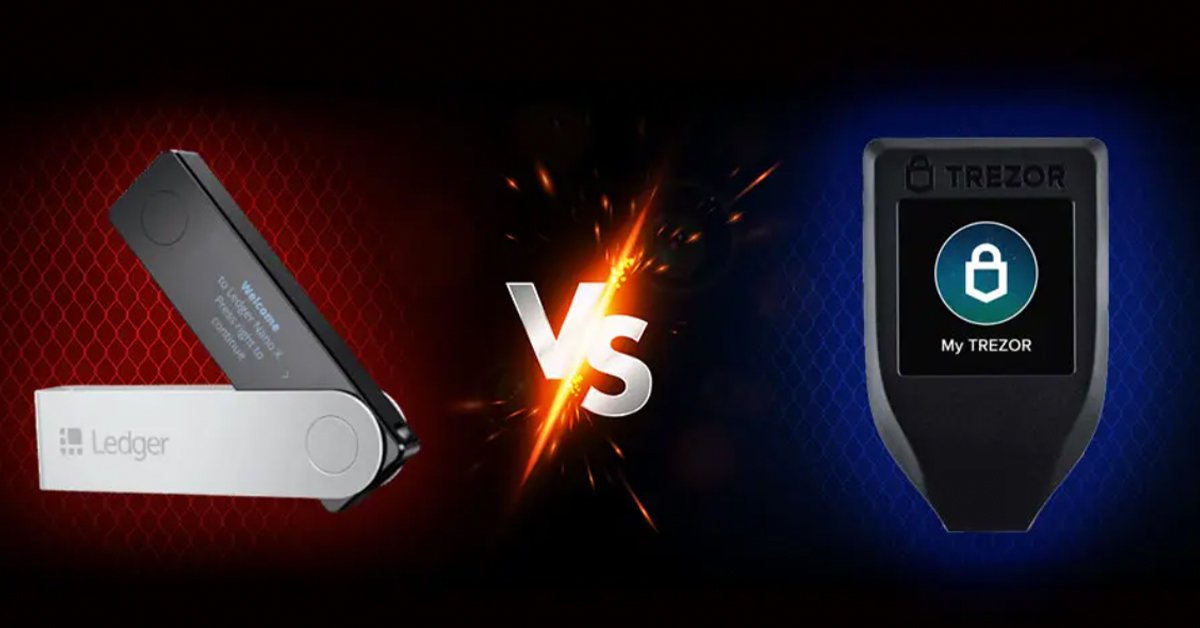
A smooth onboarding process and accessible support are vital for a good user experience.
Setup Process and User Interface
Both brands have focused on making their setup processes straightforward.
The Ledger Live application guides users through initialization, and its intuitive interface is often praised by beginners.
Trezor Suite also provides a simple setup flow.
The choice between a touchscreen device like the Model T or Ledger Flex and a button-operated one like the Nano S Plus can significantly impact the perceived ease of use.
Customer Support and Educational Resources
Ledger and Trezor both offer extensive online knowledge bases and support resources to help users troubleshoot issues. Customer support is typically handled through ticketing systems.
Community forums and social media channels are also valuable resources for both Trezor users and Ledger users.
Trezor vs Ledger: Pricing and Value for Money
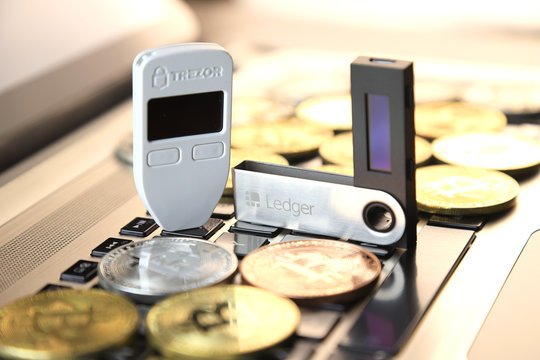
Cost is an important factor, with both brands offering models at various different price points.
Cost of Trezor Devices in the US
Trezor has traditionally been a very cost-effective option. The entry-level Trezor One is priced at approximately $59.
The newer Trezor Safe 3, with its secure element, costs around $79, while the premium Trezor Model T is priced at about $179.
This range makes Trezor hardware wallets accessible to many.
Cost of Ledger Devices in the US
Ledger devices are competitively priced but can carry a higher price for their premium models. The Ledger Nano S Plus starts at $79. The Ledger Nano X, with Bluetooth, is around $149.
The newer, feature-rich models like the Ledger Flex and Ledger Stax command a higher price, with the Stax costing approximately $279, reflecting their advanced features.
Trezor vs Ledger: Staking and Earning Features
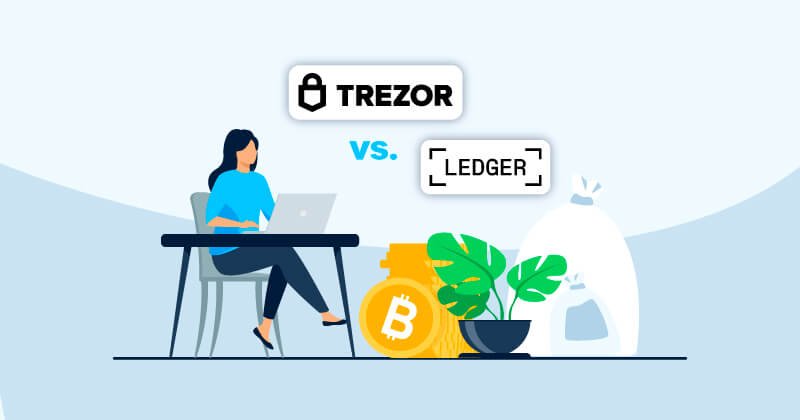
For many investors, the ability to earn rewards on their holdings is a key feature.
Staking Support on Trezor
Trezor devices support staking for various cryptocurrencies. However, this functionality is primarily enabled through third-party wallet integrations. While the Trezor Suite facilitates some staking, the process is not as integrated as its competitor’s, requiring users to connect their Trezor model to an external platform.
Staking Support on Ledger
Ledger offers a more streamlined staking experience. The Ledger Live software has built-in features that allow users to stake a wide range of cryptocurrencies directly from the application. This simplifies the process, making it a better choice for users who want an all-in-one solution for managing and earning from their digital assets.
Reputation and Community Trust

Both companies are veterans in the crypto space, but they command trust for different reasons.
User Reviews and Community Feedback
Ledger users often praise the device’s sleek design, ease of use, and the all-in-one functionality of the Ledger Live app. The brand’s focus on a secure element chip provides peace of mind for those concerned about physical attacks.
Trezor is highly regarded for its commitment to open-source principles, which fosters deep trust within the security and developer communities. The introduction of the Shamir Backup and the intuitive interface of the Model T‘s color touchscreen are frequently highlighted as strong security features.
Which is Better in 2025: Ledger or Trezor?
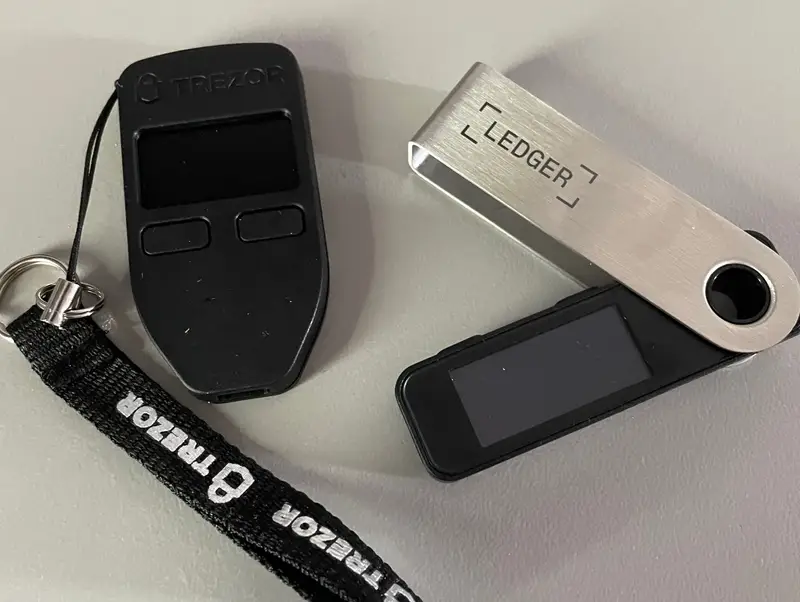
When comparing Trezor and Ledger, the key difference is their approach to securing crypto assets. The best hardware wallet for you depends on your priorities.
Ledger devices, such as the Nano S, Nano S Plus, and Nano X, use a proprietary secure element chip that protects against physical attacks, similar to credit card technology. They are managed through Ledger Live software, which simplifies cryptocurrency management.
For enhanced user experience, the Ledger Stax and Ledger Flex feature advanced touchscreens, while the Nano X offers Bluetooth connectivity for mobile app use.
This integrated system, built on the Blockchain Open Ledger Operating System, provides ease of use for managing digital assets like staking and NFTs, though some models are pricier.
In contrast, Trezor wallets adopt an open-source security model valued for its transparency. The flagship Trezor Model T has a color touchscreen and intuitive interface with advanced features like Shamir Backup for recovery phrases. Newer models like the Trezor Safe include a secure element, bridging a gap with Ledger. While some models have physical buttons, the Model T enhances usability.
Both brands allow full control over private keys via recovery seeds and are among the top choices for crypto wallets. Management is conducted through Trezor Suite, which offers different features compared to Ledger Live. Choosing between them involves balancing Ledger’s streamlined experience with Trezor’s commitment to open security and additional features at various price points.
Conclusion
Choosing between Trezor vs Ledger ultimately comes down to personal preference and priorities.
If you value a fully open-source philosophy and advanced backup options like the Shamir Backup, a Trezor wallet like the Trezor Model T or the new Trezor Safe 5 may be the better choice.
If you prefer a seamless user experience, integrated staking and NFT management through a single application, and the proven security of a secure element chip with Bluetooth connectivity, then a Ledger device like the Ledger Nano X or the innovative Ledger Flex may be more suitable.
Both provide some of the best hardware wallet options available, offering strong security features to protect your crypto wallet.
FAQs
Can Trezor or Ledger be hacked?
Hardware wallets are designed to be highly resistant to hacking, as they keep private keys offline. However, no device is entirely immune. Vulnerabilities can be found, particularly if an attacker gains physical access to the device. Ledger’s secure element is designed to provide strong protection against such physical attacks. Always use a strong PIN and a passphrase for maximum security.
Why is Trezor safer than Ledger?
The argument for Trezor being safer is rooted in its open-source nature. Because its code is publicly available, it can be audited by anyone, leading to greater transparency and trust.
Proponents believe this open approach makes it harder for backdoors or vulnerabilities to go unnoticed.
What is the Ledger controversy?
The primary controversy surrounding Ledger often relates to its closed-source firmware and a service called Ledger Recover. This service, which allows users to back up their recovery phrases with a third party, raised concerns among some that it could create a new attack vector, challenging the core principle that users should have sole complete control over their private keys.
Is Trezor owned by Ledger?
No, Trezor and Ledger are two separate, competing companies. Trezor is a product of SatoshiLabs, based in the Czech Republic, while Ledger is a French company.
Do both wallets support staking and NFTs?
Yes, both support staking and NFTs. However, Ledger offers a more integrated experience for both through the Ledger Live app. Staking and NFT management with a Trezor wallet often requires using a third-party application connected to the device.
What happens if I lose my hardware wallet?
If you lose your hardware wallet, your crypto assets remain safe as long as no one can guess your PIN. You can recover your entire wallet on a new device (from any brand) using your recovery seed or recovery phrases.
This is why it is essential to store your seed phrase securely and offline.
Which is more cost-effective: Ledger Flex or Trezor Safe 5?
The Ledger Flex and Trezor Safe 5 are premium devices with different features and price points. The Trezor Safe 5 generally has a higher price than the Flex. The better value depends on your needs. The Safe 5 offers a color touchscreen and advanced Shamir Backup. The Flex provides a larger E Ink touchscreen and Bluetooth, which may justify its cost for users prioritizing a premium mobile device experience.
